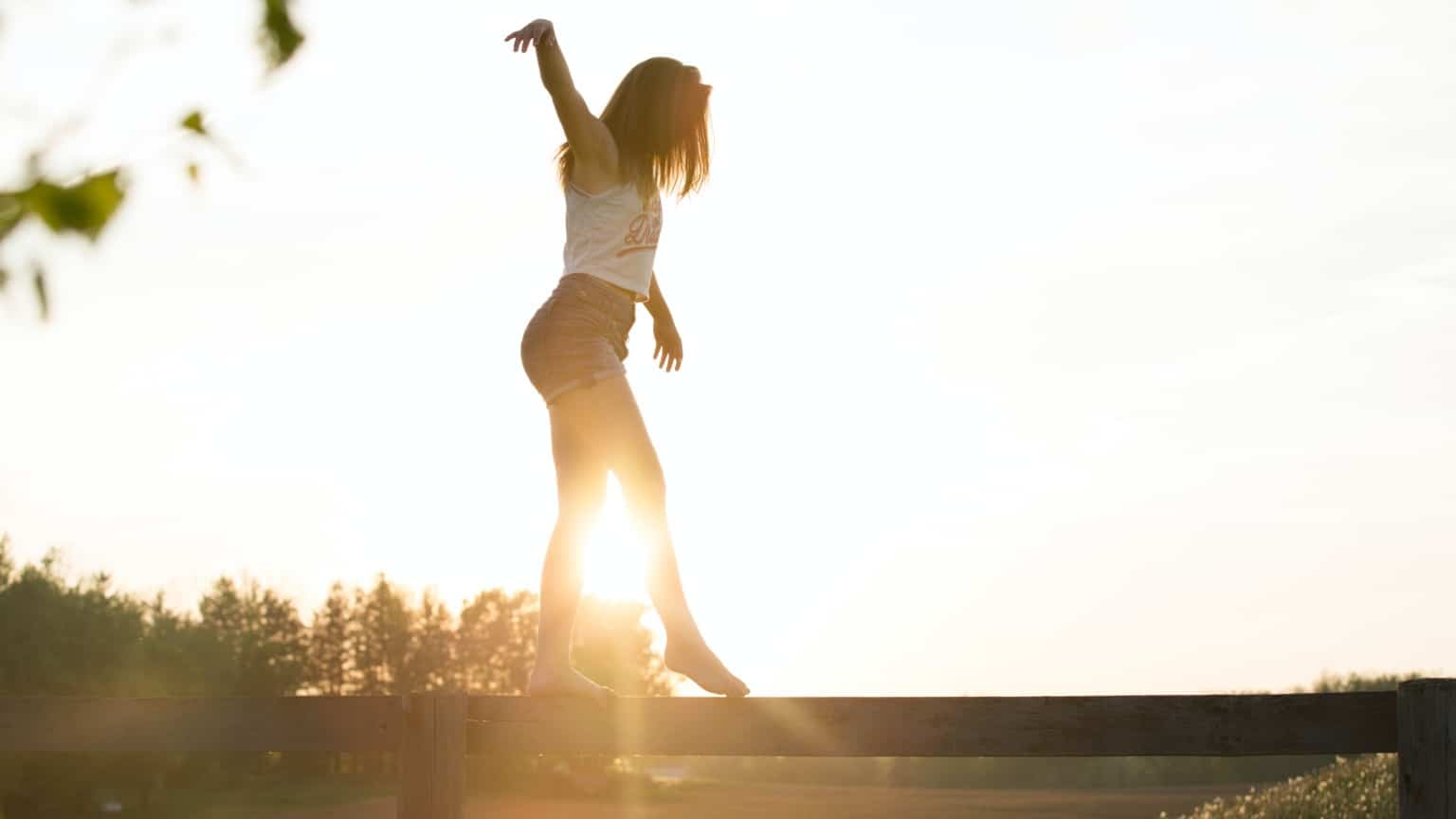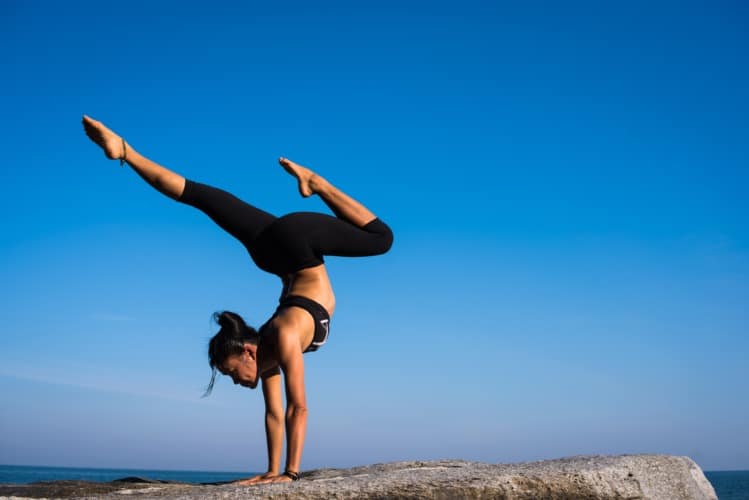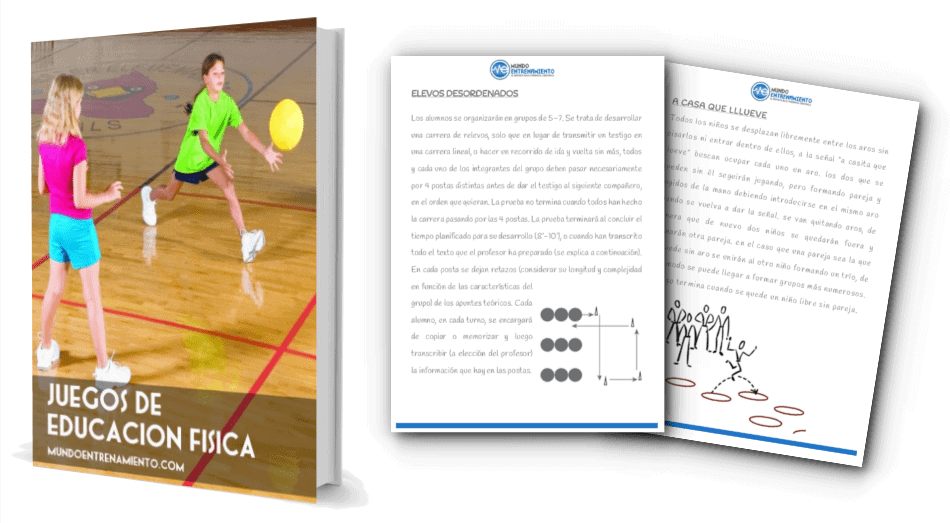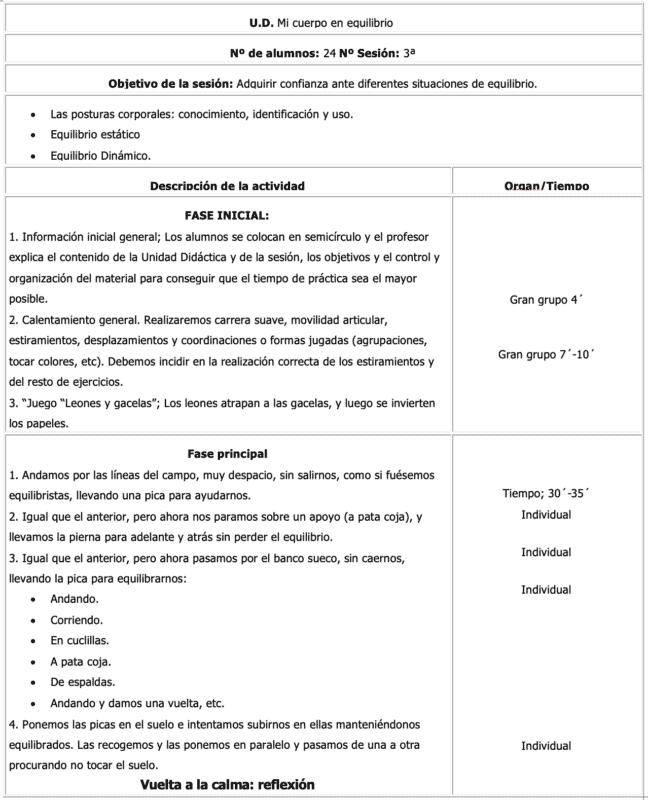The balance in physical education is considered one of the perceptual-motor skills.
Its definition explains that it is a state of immobility of a body subjected to two or more forces of the same intensity acting in opposite directions, thus counteracting or canceling each other out.
Since it is part of the perceptual-motor skills, a brief analysis of those it is part of is provided below.
If we analyze all the basic motor skills and abilities, we can observe how balance and coordination are present in all of them. Based on this, the following classification of motor skills (1) can be established:
- General Dynamic Coordination: serves as the basis for all movements. It is mainly manifested in movements, turns, and jumps.
- Oculo-manual Coordination: Involves the perceptual mechanism and is mainly manifested in throws and receptions.
- Segmental Coordination: when the whole body is not involved, but only a part of it. It is mainly manifested in fine motor skills and during the phase of lateralization consolidation.
- Postural Control and Balance in physical education: Maintenance of a certain posture, whether in a static or dynamic position.
The development period of these skills is in its sensitive phase between 6 and 12 years, a period between the acquisition and development of children’s perceptual-motor skills and the full development of the body schema.
What is balance in physical education?
In general, balance in physical education could be defined as:
The proper maintenance of the position of the different parts of the body and the body itself in space.
The generic concept of balance encompasses all those aspects related to postural control, allowing effective action with maximum energy savings, to the set of organic systems.
Various authors have defined the concept of Balance in Physical Education, among them we highlight:
- Contreras (1998): maintenance of posture through corrections that nullify variations of exogenous or endogenous character.
- García and Fernández (2002): body balance consists of the tonic modifications that muscles and joints make to ensure the stable relationship between the body axis and the center of gravity.
Types of balance in physical education
We can talk about two different types of balance in physical education:
- Dynamic: The body is not still, balance during movement. There is a different type of balance for each type of movement. For example, in most actions, the ability to rebalance or seek lost balance is necessary to maintain, as the definition of balance in physical education states, a state of immobility.
- Static: Consists of assuming a posture and maintaining it for a certain time. A clear example of this type of balance is yoga postures, where the subject places their body in a posture and must maintain it without moving.
Balance in physical education, both static and dynamic, matures around the age of 5, when children can walk by themselves, run, and even perform other skills that require this ability.
But it is not until the age of 7 that the ability to remain balanced with closed eyes is achieved (1).
The regulation of balance in physical education is determined by three types of mechanisms:
- Kinaesthetic: this mechanism is related to the receptors present in the muscle.
- Labyrinthine: Related to the middle ear. Provides information about our position in space.
- Visual: Information we receive through sight
Evolution of balance in physical education
Balance is a quality that, like all, evolves with age. This evolution will be linked to several aspects (2):
- The first aspect is the maturity of the central nervous system; during childhood, it lacks the same, and therefore, it is difficult to find in children a high motor capacity related to balance.
- The ability to integrate information from proprioceptive systems. Proprioception work helps improve balance, so proprioceptive work is necessary to achieve the goal of increasing the balance and coordination of the subject working on it.
- Capacity for motor learning, a process through which patterns, models, and mechanisms are acquired to automatically and precisely readjust muscle activity at any given time. Depending on the characteristics and abilities of each individual, adaptations to the different exercises and tasks practiced to improve balance in physical education and for it to evolve will be necessary.
Feedback as a learning tool
It has been proven that during the performance of tasks related to balance work in physical education during adolescence, the feedback or feedback that provides the most benefits is terminal-verbal (3).
Moreover, this type of feedback, compared to others, makes PE students or the subjects affected retain the learning for a longer time.
Therefore, it is advisable that in Physical Education, the words or phrases used to provide instructions to facilitate the improvement of skills of stability and balance in adolescents are taken into account.
Since, depending on the type of information given, it can have a certain impact on the performance and learning of the task by the students.
Below you can download a free ebook on games in Physical Education
How to improve balance in Physical Education?
As has been said, balance in physical education is a skill that students already possess in the last years of Primary Education and continue to work on during it, even in Secondary Education, in the subject of Physical Education.
The student is between 12-16 years old in a sensitive phase to work on it, so these years should be used to develop the student’s basic and specific motor skills.
In this way, in the future and exposure outside the school, they can work autonomously and regulate their exercise practice without problems.
Balance in physical education can be worked on within the didactic units of physical condition.
Also in isolated sessions focused on motor skills (for example, sessions of throws and turns where coordination and balance are considered the basis of them) or in didactic units of certain sports.
For example, in units of body expression, balance fits perfectly, as well as in units of rhythmic gymnastics, artistic, dance, etc.
Both static and dynamic balance should be taught, making a progression of learning in different situations.
To do this, as mentioned earlier, it is advisable to work on proprioception from Physical Education, making students improve their self-concept and know themselves, thus being able to control to a greater extent their ability and form in terms of performing different actions and movements.
Once the proprioceptive system has been trained to improve balance, improvements in the anticipation mechanism can be observed, alterations of balance to prevent imbalance or change of position or posture in which the individual is (4).
Some of the exercises that can be used to work on balance in Physical Education are supports on one leg, vertical supports with aids, oscillations and turns of the upper limbs and trunk with support on one leg, on two legs, or turns on different axes.
Also, maintaining postures or movements with limited support or on irregular surfaces, exercises with closed eyes, and exercises with implements.
Practical proposal for balance in Physical Education
Below is a session as a practical proposal for balance in physical education to work in Primary or Secondary classes with students (5):
Conclusions
The work of balance in physical education is fundamental throughout life, childhood, and adolescence.
All these are moments of its development.
Sensitive phases that should be taken advantage of so that the student acquires knowledge and skill about it, causing a long-term improvement that will help prevent problems and injuries, especially in adulthood and old age.
Bibliography
- Falcón, V. C., & Rivero, E. D. (2010). Motor learning. Basic motor skills: coordination and balance. Revista Lecturas: Educación Física y Deportes, 1.
- Fraile Cordón, N. (2012). Balance and its learning process in physical education. Retrieved from: https://uvadoc.uva.es/handle/10324/2648
- Ahulló, A. M., Massó, X. G., Osa, C. G., & Torres, I. E. (2019). Influence of the type of feedback used in learning a motor balance task. Retos: nuevas tendencias en educación física, deporte y recreación, (36), 435-440. Retrieved from: https://dialnet.unirioja.es/servlet/articulo?codigo=7260937
- Benitez, J., & Póveda, J. (2010). Proprioception as an educational content in primary and secondary physical education. Revista Pedagógica ADAL, (21), 24-28.
- Navarro, A. (2010). Didactic unit: My body in balance. EFdeportes. Digital magazine. 15 (151).






